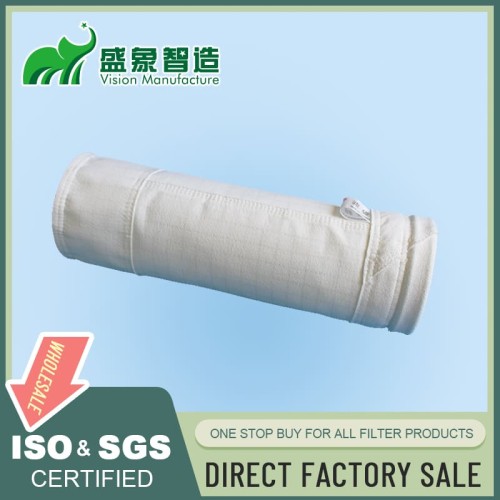
Combed Cotton vs. Regular Cotton: Unraveling the Differences for Industrial Applications
In the dynamic world of industrial filtration and textiles, cotton stands as a staple due to its natural properties and versatility. Here, we delve into the nuanced distinctions between combed and regular cotton, exploring their unique applications, advantages, and the innovative advancements shaping their use in industrial settings.
Understanding Cotton
Cotton, harvested from the cotton plant, is celebrated for its absorbency, softness, and breathability, making it essential in numerous applications:
- Cultivation and Processing: From field to fabric, cotton's journey involves several stages of growth, harvesting, and processing to become the usable fiber we know.
Regular Cotton
Regular cotton is widely used due to its:
-
Availability: Abundant and cost-effective, making it a popular choice in various industries.
-
Practicality: Less labor-intensive to produce, which generally makes it less expensive.
-
Applications: Suitable for industries where high purity or uniformity isn't critical, such as:
- General Textile Products: T-shirts, bed sheets, and other everyday items.
- Non-Critical Filtration: Where basic dust collection or pre-filtration is required.
- Packaging: Cotton balls, swabs, and other low-cost medical products.
Combed Cotton
Combed cotton, known for its superior quality, undergoes:
- Additional Processing: The combing process removes shorter fibers, enhancing the fabric's:
- Strength and Durability: Longer fibers result in stronger, more durable fabric, making it ideal for applications requiring longevity.
- Softness and Texture: Produces a softer, smoother feel, perfect for luxury textiles and high-end filtration needs.
- Purity: Cleaner fabric with fewer impurities, reducing the risk of contamination in sensitive applications.
Comparing Combed and Regular Cotton
-
Fiber Length and Uniformity: Combed cotton has longer, more aligned fibers, providing a smoother and more consistent fabric.
-
Strength and Durability: Combed cotton is notably stronger, with a higher tensile strength, making it less prone to tearing or degradation over time.
-
Softness: The texture of combed cotton is more luxurious, enhancing comfort and feel, especially in garments and fabrics that come in contact with the skin.
-
Cost: Combed cotton is typically more expensive due to the extra processing steps. However, its enhanced properties often justify the cost in high-performance applications.
-
Environmental Impact: Both types of cotton have environmental considerations, but combed cotton production can be more resource-intensive due to the additional processing. Efforts are underway to make the production process more sustainable.
Industrial Applications
Filtration
- Regular Cotton: Used in less critical applications:
- Pre-Filtration: Captures larger particles before they reach more sensitive filters.
- Dust Collection: For environments with moderate dust levels, where longevity isn't the primary concern.
- Combed Cotton: Ideal for demanding filtration environments:
- High-Efficiency Filtration: Captures finer particulates, ensuring air purity in sensitive operations.
- Pharmaceuticals and Food Processing: Where cleanliness and purity are paramount, combed cotton filters reduce the risk of contamination.
Other Industries
-
Textiles: Combed cotton is preferred for premium clothing, upholstery, and luxury textiles, where durability and comfort are key.
-
Medical and Healthcare: Used in sterile environments like operating rooms, where cleanliness and low linting are essential. Combed cotton's purity ensures minimal risk of introducing contaminants.
-
Automotive: For interior textiles, ensuring comfort and durability in upholstery and seat covers.
-
Cleanrooms and Electronics: Combed cotton's lint-free properties make it suitable for environments where even minute contaminants can compromise sensitive electronic components or manufacturing processes.
-
Food Processing: Both types are used, but combed cotton ensures higher food safety standards due to its reduced impurities.
Selection Criteria
When choosing between combed and regular cotton, consider:
-
Quality and Performance: High-end applications often require combed cotton due to its superior properties.
-
Budget: Regular cotton for budget-sensitive projects where the enhanced characteristics of combed cotton aren't necessary.
-
Environmental Considerations: The choice may depend on sustainability goals, with some companies favoring organic or recycled cotton options.
-
Regulations: Industry-specific standards might dictate material selection, particularly in sectors like pharmaceuticals or food processing.
Innovations in Cotton Processing
-
Advanced Combing Technologies: Improving the quality of combed cotton, reducing waste, and enhancing efficiency.
-
Sustainable Practices: Efforts to reduce water usage, implement organic farming practices, and lower the overall carbon footprint of cotton production.
-
Blended Fibers: Combining cotton with synthetic fibers to enhance performance characteristics, like moisture-wicking or flame resistance.
Maintenance and Environmental Impact
-
Proper Care: Cleaning protocols, longevity, and storage practices are essential for maintaining the performance of cotton-based products. Regular inspections, timely cleaning, and appropriate storage conditions can extend the lifespan of filters and textiles.
-
Environmental Impact:
- Water Usage: Cotton farming is water-intensive, but innovations in irrigation and cultivation techniques are reducing this impact.
- Organic vs. Conventional: Organic cotton farming reduces pesticide and chemical use, promoting environmental health.
- Recycling and Upcycling: Efforts to recycle cotton fabrics or upcycle them into new products are gaining traction, minimizing waste.
Case Studies
Real-world applications:
-
Filtration Systems: A pharmaceutical company implemented combed cotton filters, reducing contamination rates by 30% and ensuring compliance with stringent regulatory standards.
-
Versatile Applications: A textile manufacturer switched from regular to combed cotton for high-end fashion lines, noting improved fabric quality, customer satisfaction, and a 20% increase in sales.
Future Trends
The cotton industry is on the brink of transformation:
-
Emerging Technologies: Genetic modifications to enhance fiber quality, resistance to pests, and drought tolerance.
-
Smart Textiles: Integration of smart technologies into cotton products, allowing for self-cleaning fabrics, temperature regulation, and health monitoring.
-
Circular Economy: A shift towards closed-loop production systems where cotton is recycled and reused, reducing the environmental footprint.
-
Biodegradable Finishes: Developing finishes that are eco-friendly and biodegradable, enhancing cotton's sustainability profile.
Explore how Vision Filter can guide you in selecting the perfect cotton material for your industrial needs. Contact Us to discuss your unique requirements and ensure top-tier performance in your operations.

